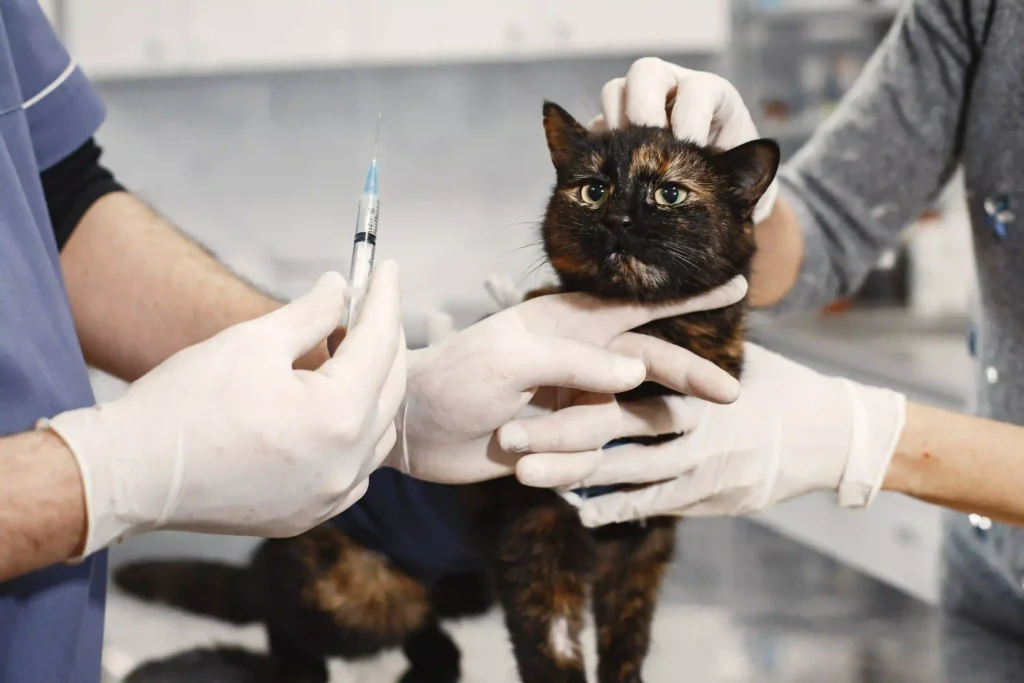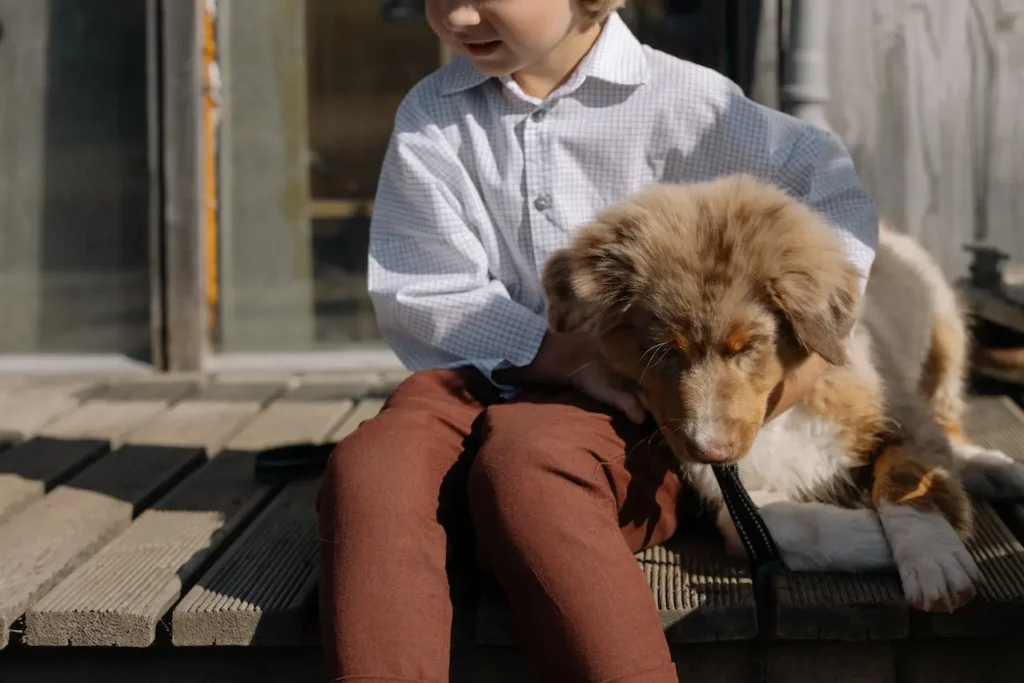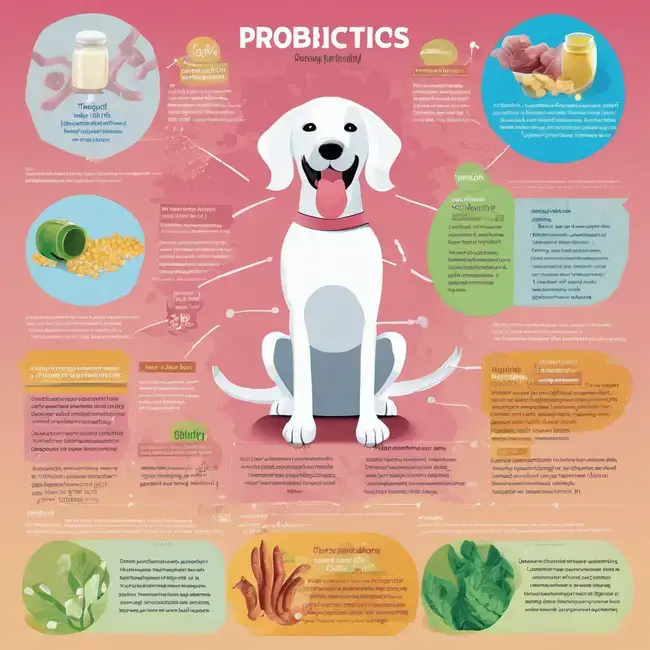Can Dogs Eat Peas? Discover 7 Key Benefits of Peas For Dogs
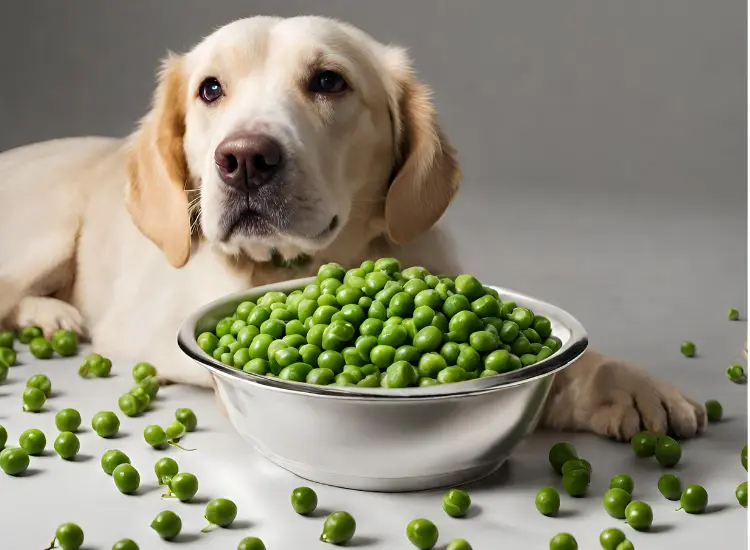
- Can dogs eat peas?
- Are peas good for dogs?
- Nutritional value of peas for dogs
- Benefits of peas for dogs
- How to prepare peas for dogs
- Can dogs eat green peas?
- Can dogs eat black eyed peas?
- Can dogs eat green peas and carrots?
- Can dogs eat green peas and corn?
- Can dogs eat green chickpeas?
- Can dogs eat frozen peas?
- Can dogs eat snap peas?
- Potential risks and precautions of peas for dogs
- So, are peas bad for dogs?
- Other safe foods and fruits for dogs
- Conclusion: Can dogs have peas?
- References
Can dogs eat peas?
This post may contain affiliate links, meaning I may earn a commission if you make a purchase, at no extra cost to you. I only recommend products I trust. Thank you for your support.
Yes, dogs can eat peas in moderation. Peas are a healthy source of vitamins, minerals, and fiber for dogs. However, too many peas can cause digestive issues, so it’s best to feed them in appropriate amounts as part of a balanced diet.
The 10% rule applies, meaning treats, including vegetables like peas, should only make up 10% of a dog’s overall calories. The serving size of peas for dogs varies based on their weight, with extra care to avoid adding salt or seasoning.
As with any new food, it’s advisable for pet owners to introduce peas gradually into their dog’s diet to monitor for any potential allergic reactions or digestive issues, especially if it’s their first time consuming this vegetable.
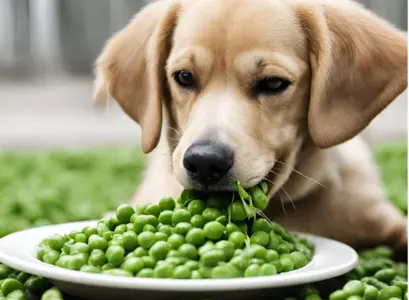
Are peas good for dogs?
Yes, peas are good for dogs when given in moderation. They are a nutrient rich vegetable, providing vitamins A, B, and K, minerals like iron and potassium, as well as fiber that can contribute to a dog’s immune system and overall health.
Additionally, peas for dogs are low in fat, making them a healthy treat option, and they also offer a plant-based source of protein.
Nutritional value of peas for dogs
Peas offer several nutritional benefits for dogs, making them a wholesome addition to their diet.
The nutritional value of peas for dogs includes:
1. Vitamins
Peas contain vitamins A, C, K, and various B vitamins (including folate), which contribute to a dog’s overall immunity, supporting functions such as vision, blood clotting, and energy metabolism.
2. Minerals
Peas are a source of essential minerals such as iron, zinc, and potassium, which play vital roles in bone health, immune function, and electrolyte balance.
3. Fiber
Peas are high in dietary fiber, promoting digestive health and regularity in dogs.
4. Plant-based protein
While not a primary source of protein, peas provide a plant-based protein option, which can be beneficial for dogs with dietary sensitivities or allergies to common animal-based proteins.
5. Low fat content
Peas are low in fat, making them a suitable treat option for dogs, particularly those on low-fat or weight management diets.
6. Antioxidants
Peas contain antioxidants such as lutein, which contribute to reducing inflammation and supporting the immune system in dogs.
Benefits of peas for dogs
Feeding your dog peas can offer numerous benefits to their immune system and overall health.
Here are 7 key benefits of peas for dogs:
1. Rich in nutrients
Peas are packed with essential nutrients such as vitamins A, K, and B, as well as minerals like iron and potassium which support functions such as vision, blood clotting, and energy metabolism.
2. Supports digestive health
Peas contain dietary fiber, which can aid in digestive health and regularity for dogs. The fiber in peas can help support a healthy gastrointestinal system and may alleviate constipation in some cases.
3. Low fat
Peas for dogs are low in fat, making them a suitable treat option for dogs, especially those that require a low-fat diet due to health concerns such as obesity or pancreatitis.
4. Source of protein
Peas for dogs also provide a plant-based source of protein, which can be beneficial for dogs, especially those with dietary sensitivities or allergies to common animal-based proteins.
5. Reduce inflammation
Peas for dogs contain antioxidants such as lutein that can help in reducing inflammation and support their immune system.
6. Weight management
Due to their low-calorie nature, peas can be a healthy snack option for dogs on weight management or weight loss diets, providing them with a satisfying treat without an excessive calorie intake.
7. Boost energy
The natural sugars found in peas provide dogs with a quick and healthy energy boost, making them an excellent snack option for active dogs.
How to prepare peas for dogs
When preparing peas for dogs, it’s important to ensure that they are prepared properly and served safely and suitably.
Here are some guidelines for preparing peas for dogs:
1. Cooked Peas
Peas for dogs can be served cooked or raw. Cooking them can help break down the cell walls, making the nutrients more accessible for absorption.
2. Mashed Peas
For small dogs or those with dental issues, mashing peas can make them easier to eat and digest. Mashed peas can be mixed with your dog’s regular food or served as a standalone treat.
3. Frozen Peas
Frozen peas can be a refreshing and crunchy snack for dogs, especially during hot weather. Make sure to thaw them before serving, or offer them frozen for a cooling treat.
4. Serve plain
When serving peas to dogs, it’s best to offer them plain, without any added seasonings, salt, or any other additives that may be harmful to dogs.
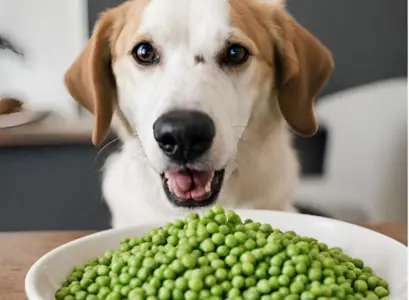
Can dogs eat green peas?
Yes, dogs can eat green peas in moderation, as excessive consumption can lead to digestive issues.
These nutritious treats can provide vitamins A, K, and B, as well as minerals like iron, zinc, and potassium, which support a dog’s overall immunity.
Can dogs eat black eyed peas?
Yes, dogs can eat black eyed peas are safe for dogs to consume. They are high in fiber and contain essential vitamins and minerals.
However, it’s important to note that black-eyed peas should be cooked and prepared without any added seasonings or ingredients that may be harmful to dogs, such as onions or garlic.
Can dogs eat green peas and carrots?
Yes, dogs can eat green peas and carrots but make sure to cook or steam the peas and carrots before serving them to your dog.
Green peas and carrots offer a combination of vitamins, minerals, and fiber, providing well rounded health benefits including digestive health, nervous system function, and cardiac health in dogs.
Can dogs eat green peas and corn?
Yes, dogs can eat green peas and corn in moderation but it’s essential to remove the corn kernels from the cob and cook or steam both the peas and corn before offering them to your dog. This ensures that the vegetables are easily digestible and safe for consumption.
Both green peas and corn are safe for dogs to eat and offer a combination of vitamins, minerals, fiber, protein, carbohydrates, and antioxidants.
Can dogs eat green chickpeas?
Yes, dogs can eat green chickpeas in moderation but they should be thoroughly cooked before feeding them to your dog as raw chickpeas can be difficult for dogs to digest.
Green chickpeas, also known as garbanzo beans, contain vitamins, minerals, protein, and fiber, which can contribute to a healthy diet for dogs.
Can dogs eat frozen peas?
Yes, dogs can eat frozen peas as long as they are thawed and served plain without any seasoning or additives. This nutritious snack can provide a refreshing option for dogs, particularly during warmer weather.
Frozen peas can be a cool and crunchy treat for dogs, offering vitamins like A, K, and B, as well as minerals such as iron, zinc, and potassium.
Additionally, it’s essential to avoid feeding canned peas to dogs due to their high sodium content, which can be harmful to dogs when consumed in excess.
Can dogs eat snap peas?
Yes, dogs can eat snap peas, in moderation but always remove the strings along the seams of the snap peas before feeding them to dogs to prevent any choking hazards.
Furthermore, it’s advisable to serve snap peas plain and cooked or steamed until tender, particularly for dogs that may have difficulty chewing or swallowing.
Snap peas, also known as sugar snap peas, are safe for dogs and offer various nutritional benefits such as vitamins, minerals, fiber, and antioxidants.
Potential risks and precautions of peas for dogs
When feeding peas to dogs, there are a few potential risks and precautions to consider:
1. Choking hazard
Whole peas or large pieces of peas can pose a choking hazard, especially for small dogs or those prone to eating quickly without chewing thoroughly.
It’s advisable to either mash the peas or feed them in a form that reduces the risk of choking.
2. Portion control
While peas offer nutritional benefits, they should be fed in moderation. Excessive consumption of peas can lead to digestive upset, such as gas or diarrhea.
Following the 10% rule is important, where treats, including vegetables like peas, should only make up 10% of a dog’s overall calories.
3. Seasonings and additives
Dogs should not be fed peas seasoned with salt, garlic, onions, or other additives that can be harmful to them. Always ensure that peas are served plain and without any added flavorings.
4. Allergies
While rare, some dogs may have allergies to peas. It’s important to monitor dogs for any signs of allergic reactions, such as itching, swelling, or gastrointestinal distress, when introducing peas for the first time.
So, are peas bad for dogs?
No, peas are not bad for dogs. In fact, peas can be a healthy and nutritious addition to your dog’s diet.
They offer a range of health benefits, including digestive support, weight management, and immune system support.
However, it’s important to feed peas to your dog in moderation and prepare them properly to ensure they are easily digestible and safe for consumption.
Other safe foods and fruits for dogs
In addition to peas, there are several other safe foods and fruits that you can incorporate into your dog’s diet.
Here are a few examples:
1. Broccoli
Broccoli is a great source of vitamins and minerals for dogs. It can be served cooked or steamed, but avoid adding any seasonings or oils.
2. Bananas
Bananas are a healthy and natural treat for dogs. They are rich in potassium and can be served in small, bite-sized pieces.
3. Pineapple
Pineapple is safe for dogs to eat in moderation. It contains enzymes that can aid in digestion and provide a sweet and refreshing snack.
4. Shrimp
Cooked shrimp can be a tasty and nutritious protein source for dogs. Make sure to remove the shell and any seasoning before feeding it to your dog.
5. Cantaloupe
Cantaloupe is a hydrating fruit that dogs can enjoy. Remove the seeds and rind before offering it to your furry friend.
6. Raw chicken
Raw chicken should only be fed to dogs under the guidance of a veterinarian or a trained professional. It’s important to handle raw chicken with caution to avoid bacterial contamination.
7. Celery
Celery is a low-calorie vegetable that can provide dogs with a crunchy and refreshing snack. Cut it into small, manageable pieces before serving.
8. Cauliflower
Cauliflower is a nutritious vegetable for dogs when given in moderation. It provides vitamins, minerals, and fiber and can be served cooked or raw as long as it is washed thoroughly.
Conclusion: Can dogs have peas?
So, can dogs eat peas? Yes, it’s evident that peas can be a safe and beneficial addition to a dog’s diet when served in moderation and without any harmful additives.
So if you are still asking yourself the question, “Are peas good for dogs,” yes, it is affirmed by the nutritional benefits peas offer, including vitamins, minerals, and dietary fiber.
However, pet owners must prepare the peas thoroughly and be mindful of portion control, potential choking hazards, and the need for consultation with the best veterinarian near you to ensure that peas align with their dog’s specific nutritional requirements.
Overall, with proper precautions, peas for dogs can indeed be a safe and healthy treat for dogs.
Trending articles:
- Can dogs eat white rice?
- Health benefits of salmon oil for dogs
- Is canned tuna good for dogs?
- Can dogs eat olive oil?
- Best probiotics for dogs
- How to comfort a dog with pancreatitis?
- Advantages of therapy dogs
- 1400 calorie meal plan
- 1600 calorie meal plan for weight loss
- Caretaker vs caregiver
- How long does it take to reverse prediabetes?
- What is the life expectancy with fatty liver disease?
